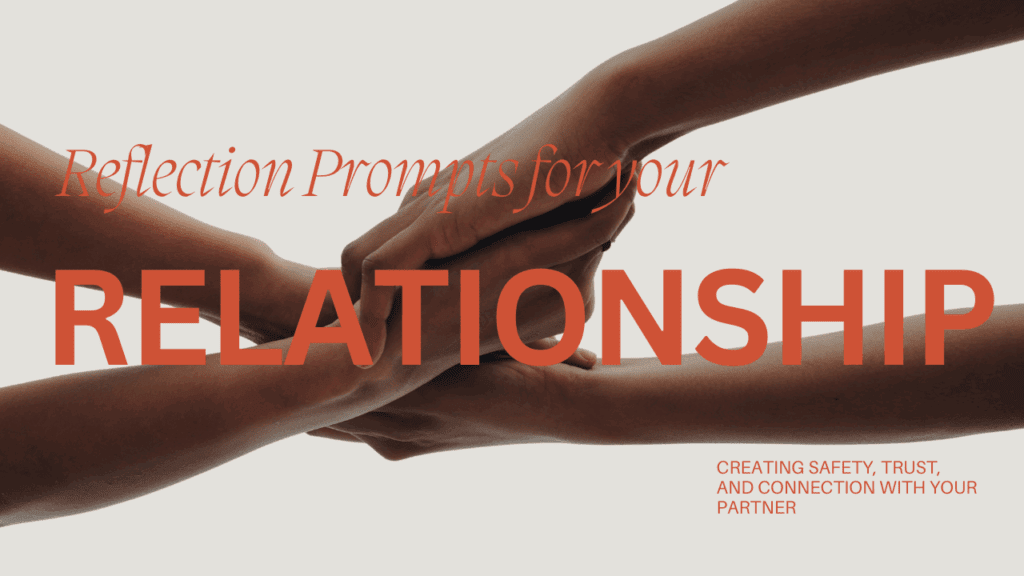
Julie Menanno, LMFT, author of Secure Love, describes secure attachment as a relationship where emotional safety is not a bonus, but the bedrock. It’s the quiet, unwavering assurance that you will be seen, soothed, and supported. Secure love isn’t the absence of conflict; it’s the ability to walk into it together, protecting the bond even when the terrain feels jagged. It’s the promise that you can risk vulnerability and still be met with steadiness rather than rejection.
Stan Tatkin, founder of the PACT (Psychobiological Approach to Couples Therapy) model, offers a parallel truth: secure-functioning relationships move as a two-person system. Two people, both tending to their own needs and to each other’s, standing shoulder-to-shoulder against life’s outside stressors. Partners committed to being the safest person in each other’s lives, attuning to each other’s emotional weather, repairing the small ruptures before they widen, and co-regulating until the nervous system remembers it can rest.
Together, their work tells us this: secure attachment in relationships is not an abstract theory. It’s the lived experience of mutual protection, a daily practice of safeguarding one another’s hearts.
A secure bond is one where you can arrive as your whole self—fears, needs, joy intact—and know you will be met with warmth, respect, and steadiness. Where self-regulation is born from co-regulation. Where safety is not assumed, but built and rebuilt, like a fire tended through the night.
Reflective Prompts for Cultivating Secure Love
These are not checklists, but invitations—questions to sit with, alone or together. They are less about “fixing” and more about listening, to yourself and to the space between you and your partner.
As a partner, I can…
Respond with emotional validation and support
When my partner is upset, what helps me pause long enough to offer understanding before solutions? What shifts between us when I do?
Help my partner feel heard before problem-solving
What allows me to resist the pull toward “fix-it” mode? How does truly hearing my partner reshape the conversation?
Bring a sense of play and curiosity
Where does play live in our relationship? When do we laugh in a way that loosens the grip of the day?
Hold and express healthy boundaries
How do I know when I’m managing my own emotions well? How do I communicate my limits without building walls?
Be authentic and capable of vulnerability
What makes it possible for me to share the unpolished truth of my experience?
Express appreciation while encouraging growth
In what ways do I let my partner know they are deeply valued, while still believing in their capacity to keep becoming?
Co-regulate and understand its role in self-regulation
When we soothe each other, what changes in my own body? What do I most need to feel emotionally “met”?
A Note on Self-Regulation
If secure attachment in relationships wasn’t something you knew in childhood, these practices may feel unfamiliar—like trying to speak a language. Learning it now may stir old grief or pain as much as it builds new trust.
Who in your life can help you learn this language without judgment? How might you offer yourself the steadiness you crave from others?
As Dr. Christopher Germer, a clinical psychologist, writes:
Love reveals everything unlike itself. When we offer ourselves unconditional love, we discover the conditions under which we were not loved. Inherently, self-compassion opens wounds, and because of that, it heals wounds.

In conflict, we can also track our reactive emotions—the quick flare of blame, the retreat behind silence, the need to control. These are often armor for our deeper fear: that we might lose connection. Secure attachment asks us to slow down, name the fear, and choose words that invite closeness instead of distance.
As a partner, I try not to…
Reinforce insecure feelings and behaviors
What stories do I tell that feed fear instead of trust?
Protest just to be heard
When I push harder, is it because I fear my words won’t land unless they are wrapped in urgency?
Control my partner’s feelings to soothe my anxiety
What happens when I trust that my partner can handle their emotions without me steering them?
Attack or criticize to force change
What would it be like to voice my needs with reassurance instead of accusation?
Withdraw and leave my partner in the dark
What helps me stay present even when I want to shut the door?
Frame the relationship as my needs vs. theirs
When have we succeeded in caring for both of us at the same time?
On Conflict and Repair
The Gottman Institute continues to remind and reassure us that:
“It’s not what you fight about that matters, but how you repair and move forward together.”
And Terry Real puts it another way: help your partner come through for you. Speak in a way that lets them win with you, not against you.
Help your partner succeed, because it’s in your interest to act like a team. In our individualistic culture, your partner either comes through for you or they don’t. But when you begin thinking relationally, ecologically, you realize that you have something to say about how things go between you.
“What can I do to help you come through for me?” is an entirely relational question.
Thinking like a team is the clear antidote to thinking like two individuals. It’s a shift from “I don’t like how you’re talking to me” to “Honey, I want to hear what you’re saying. Could you please lower your voice so I can hear it?” A shift from “I need more sex” to “We both deserve a healthy sex life. What should we do about it?

That is the heartbeat of secure attachment in relationships: protecting the bond even when the conversation is hard.
If you and your partner are ready to strengthen your connection, navigate conflict with grace, and build a relationship rooted in emotional safety, visit my services page to learn more about my couples therapy approach.
Secure love is not the absence of storms. It’s the faith, the skill, and the commitment to walk through them together.